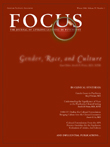CLINICAL SYNTHESISFull Access
Quick Reference for Posttraumatic Stress Disorder
Differential Diagnosis of Posttraumatic Stress Disorder| Depression after trauma (numbing and avoidance may be present, but not hyperarousal or intrusive symptoms) |
| Panic disorder (if panic attacks are not limited to reminders or triggers of the trauma) |
| Generalized anxiety disorder (may have symptoms similar to PTSD hyperarousal) |
| Agoraphobia (if avoidance is not directly trauma related) |
| Specific phobia (if avoidance is not directly trauma related) |
| Adjustment disorder (usually has less severe stressor and different symptoms) |
| Acute stress disorder (if less than 1 month has elapsed since trauma) |
| Dissociative disorders (if prominent dissociative symptoms are present) |
| Factitious disorders or malingering (especially is secondary gain is apparent) |
Differential Diagnosis of Posttraumatic Stress DisorderEnlarge table Risk Factors for Posttraumatic Stress Disorder| Past history of trauma prior to the index trauma |
| Past history of PTSD |
| Past history of depression |
| Past history of anxiety disorders |
| Comorbid axis II disorders (predictive of greater chronicity) |
| Family history of anxiety (including parental PTSD) |
| Disrupted parental attachments |
| Severity of exposure to trauma (more predictive of acute symptoms) |
Course and Prognosis of Posttraumatic Stress Disorder| Coursea |
| 4/5 of patients: longer than 3 months |
| 3/4 of patients: longer than 6 months |
| 1/2 of patients: 2 years’ duration |
| Minority of patients: symptomatic for many years or for decades |
| Predictors of worse outcome |
| Greater number of PTSD symptoms |
| Psychiatric history of other anxiety and mood disorders |
| Higher degree of numbing or hyperarousal to stressors |
| Comorbid medical illnesses |
| Female sex |
| Childhood trauma |
| Alcohol abuse |
Course and Prognosis of Posttraumatic Stress DisorderEnlarge table Biological Models of Posttraumatic Stress Disorder| Heightened physiologic responses to traumatic stimuli |
| Noradrenergic activation |
| Highly sensitized hypothalamic-pituitary-adrenal axis |
| Endogenous opioid dysregulation |
| Dysregulated serotonergic modulation |
| Hippocampal toxicity, decreased volumes |
| Limbic hyperactivity (amygdala, cingulate) and cortical hyporesponsivity (prefrontal, Broca’s area) to traumatic stimuli |



